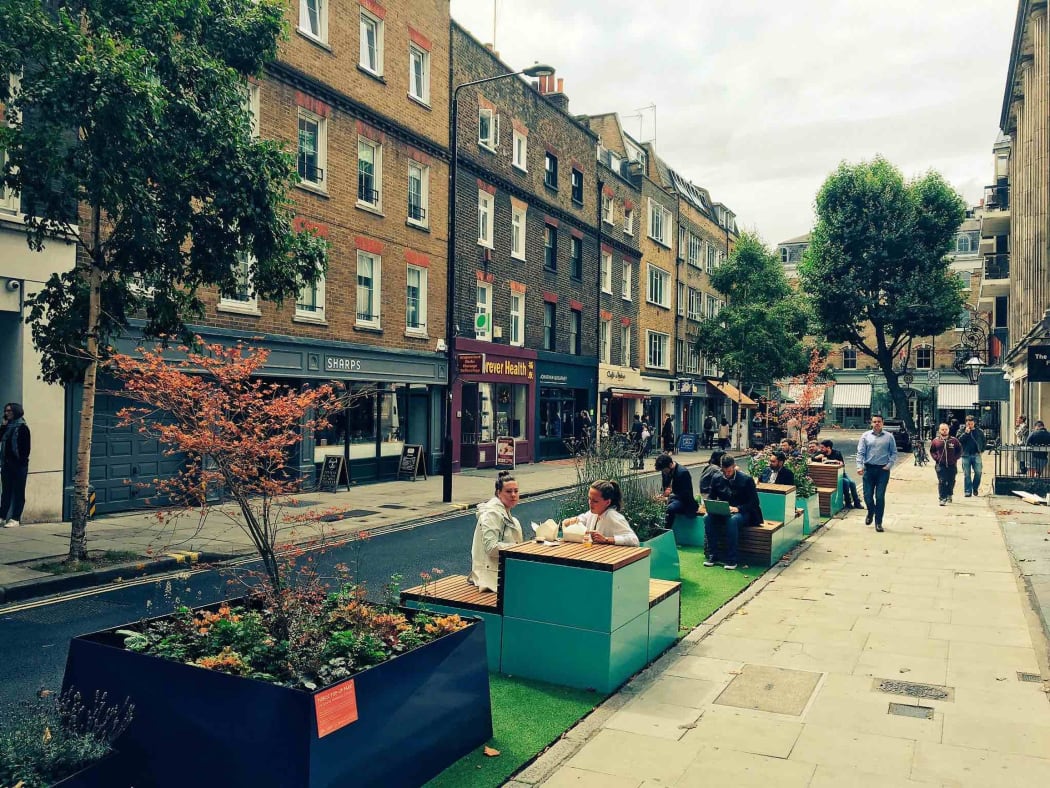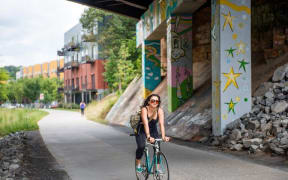Lucy Saunders is the architect of a 'healthy streets' approach to transport, which has been adopted by Transport for London and the Greater London Authority.
It is an approach to planning that makes streets more inviting, public transport more accessible and encourages journeys by foot and pedal.

Photo: Wikicommons
London mayor Sadiq Khan is right behind the shift away from cars, wanting to make the city the world's most walkable by 2041.
His office is behind the plan which seeks to boost health and reduce air pollution in the city of 8.8 million people by making streets more pedestrian friendly.
Saunders says the cities where people are most active are those where physical activity is embedded into daily life.
"Up until about 100 years ago it would have seemed peculiar to people that we would even be having a conversation about how to be physically active as part of our daily routine, because everyone would naturally do that as part of getting around."
But then came the car and the office job, and we've been getting fatter and sicker ever since.
"All of our previous incidental activity has been removed from our daily routines and now we have to actively change our environment, that supports us bringing that activity in again."
Ten indicators of a healthy street
- Pedestrians from a wide cross section of society
- People choose to walk, cycle and use public transport
- Not too noisy
- People feel safe
- The air is clean
- There are things to see and do
- People feel relaxed
- Places to stop and rest
- Shade and shelter
- Easy to cross
Saunders says the London Olympics left a positive legacy making the streets and communities in East London more walkable but London's outer suburbs are less well served.
The centre of London she says has historical advantages for the pedestrian as its street layout is medieval.
It's harder to lead a healthy life in the low density, car dominated environments of the suburbs she says.
"The places in the world where people are most active, it's not because they're highly motivated to take exercise and it's not because they feel really sporty or enthused by competitiveness, it's because it's a necessity of their daily life that they do a little bit of exercise throughout the day."

Lucy Saunders Photo: healthystreets.com
This happens in cities around the world where higher-density mixed-use buildings are the norm and there is a "fine-grained" walkable street network.
Saunders says this means rebalancing cities back towards the pedestrian and cyclist.
"There are very few progressive cities that aren't looking to reallocate space away from cars and towards other uses.
"The rub is you have to start from the point that you have to make it slightly less convenient to drive and to park."
Lucy Saunders is in New Zealand as a keynote speaker at the 2WALKandCYCLE conference in Palmerston North last week and will be speaking at the NZ Centre for Sustainable Cities seminar Why We Need Healthy Streets Wednesday night in Wellington.
Atlanta's two-wheel revolution
How do you make a city cycle-friendly? Jenn Graham talks about how she helped the auto-centric US city of Atlanta become a bonafide bike hub. Audio


